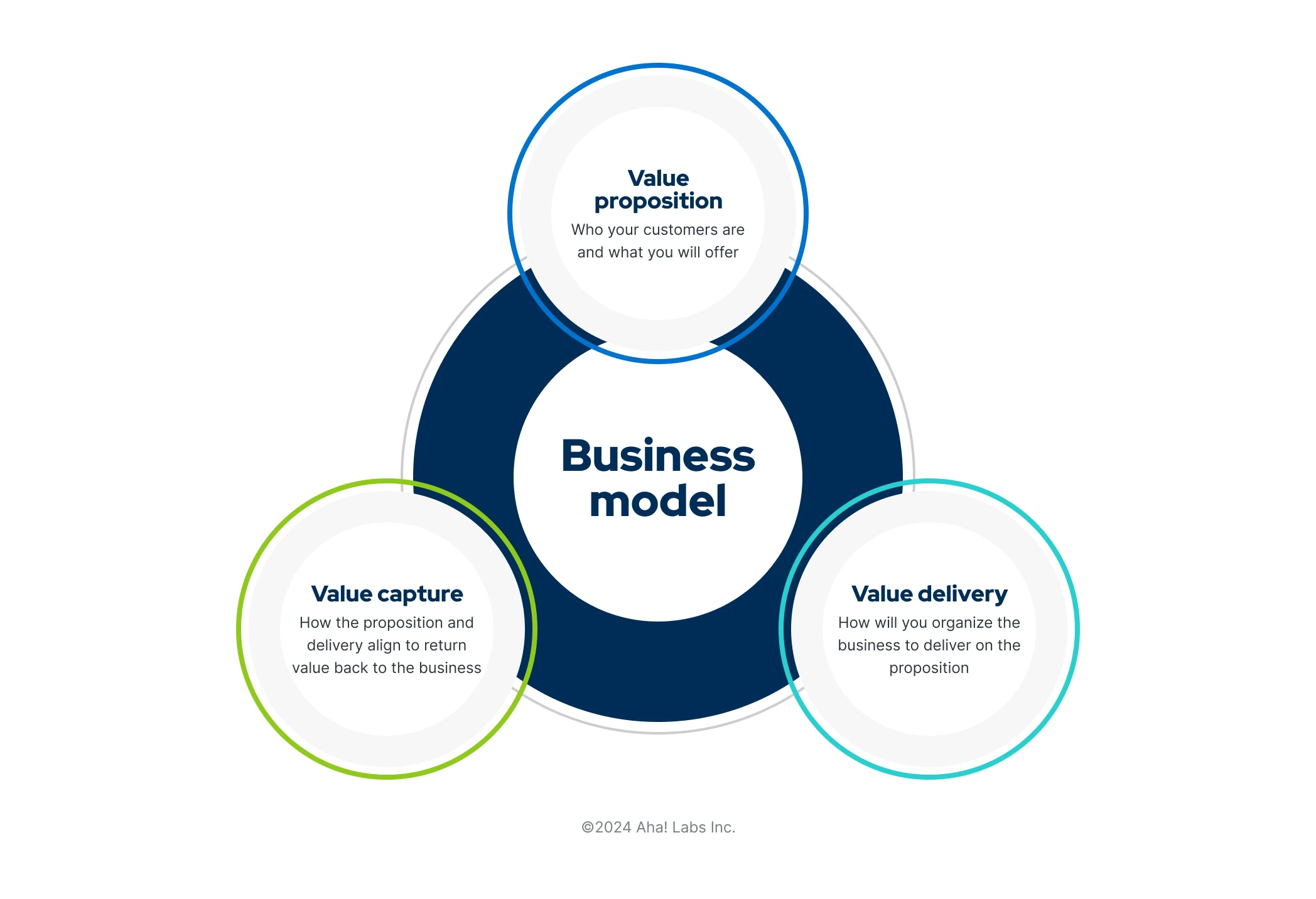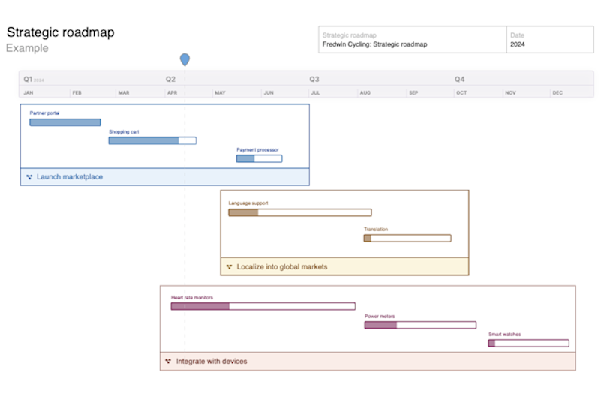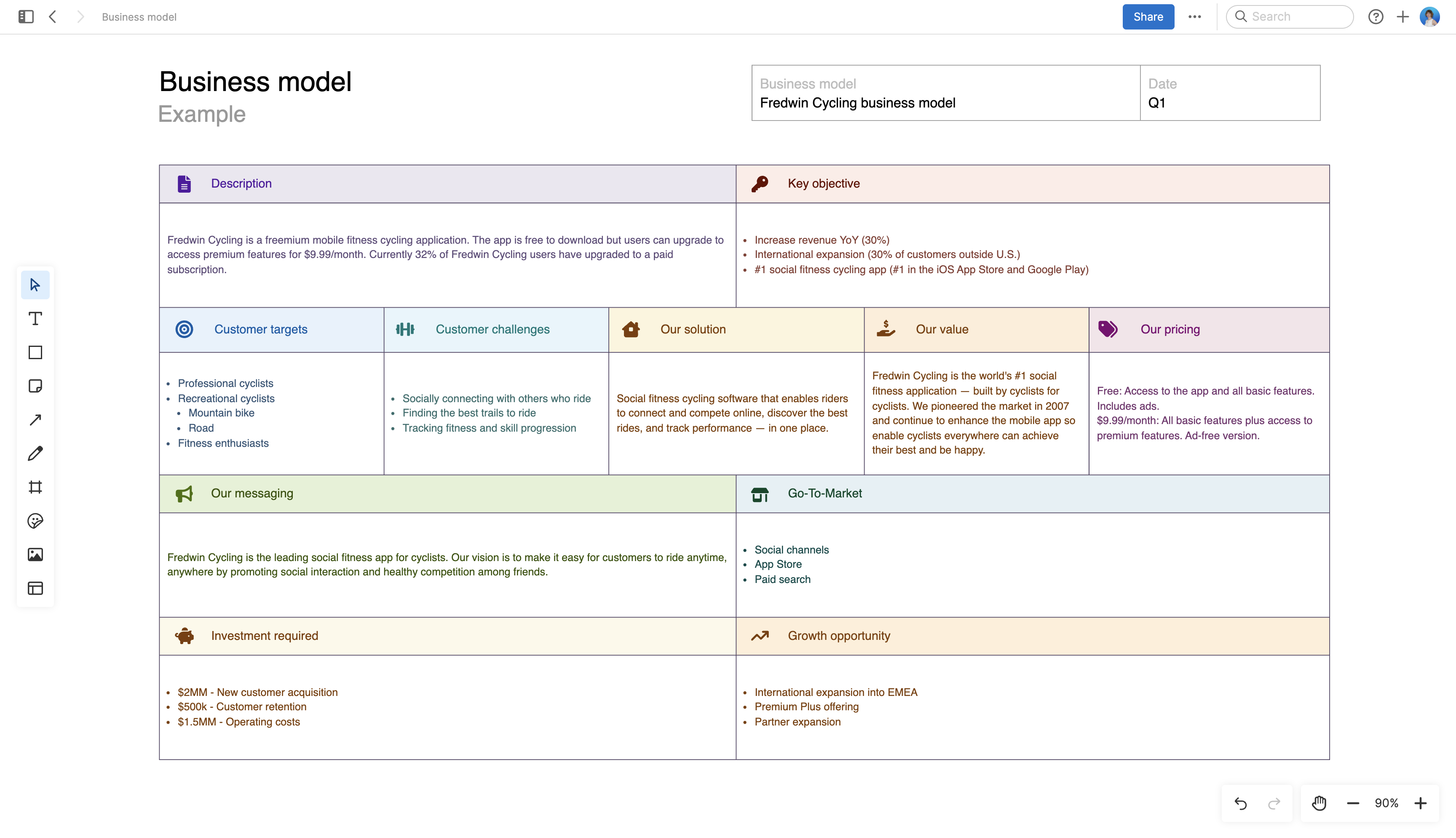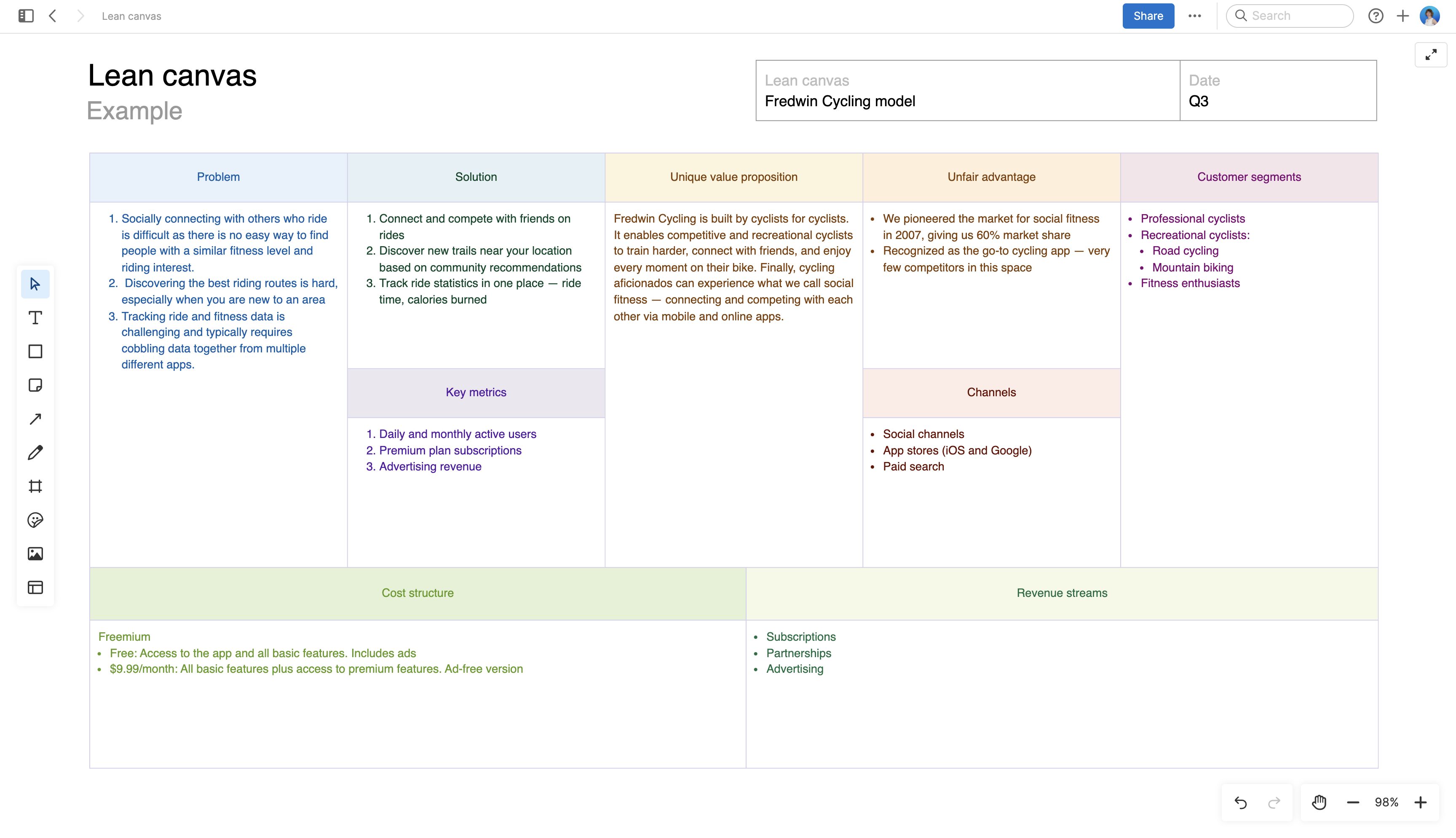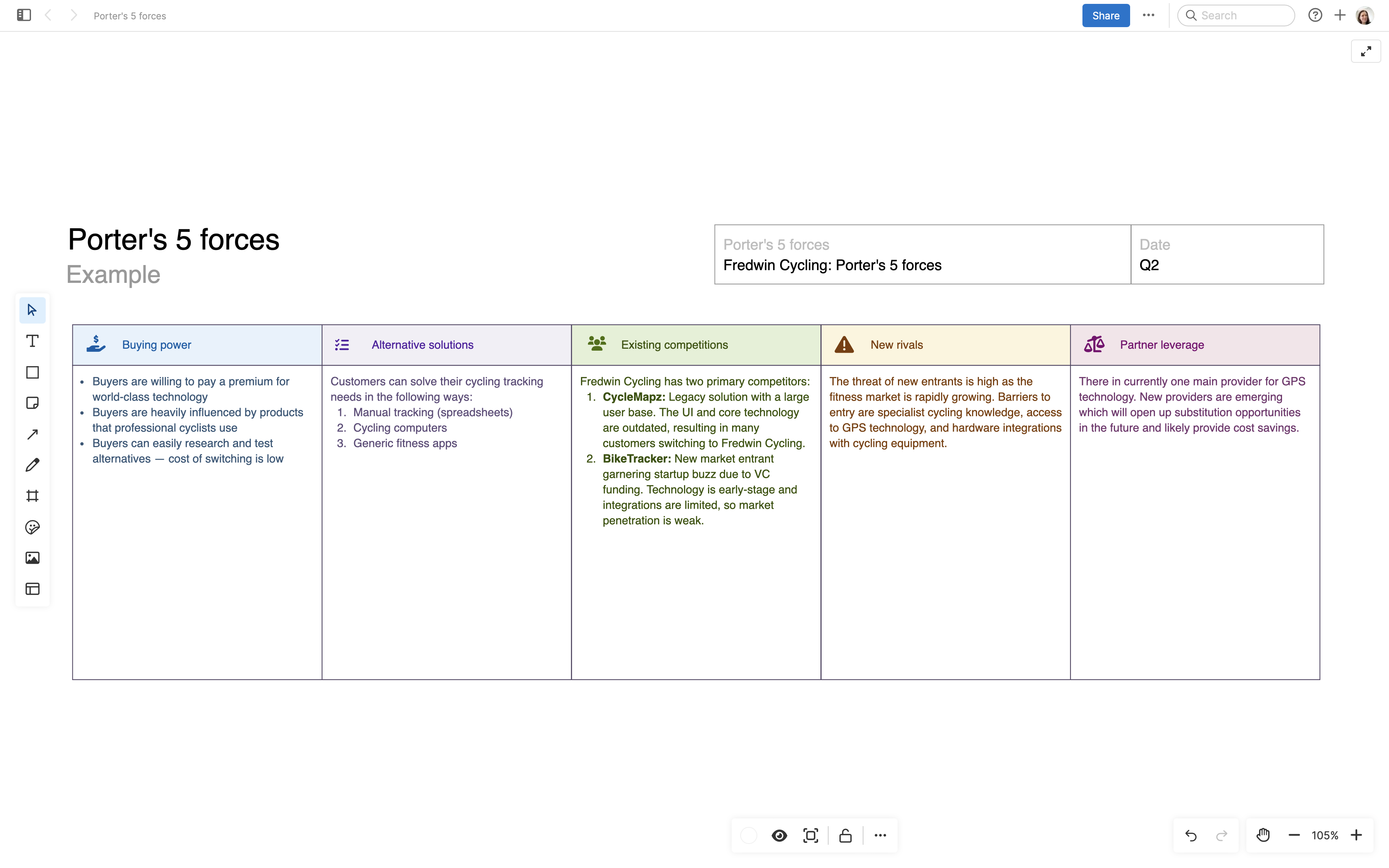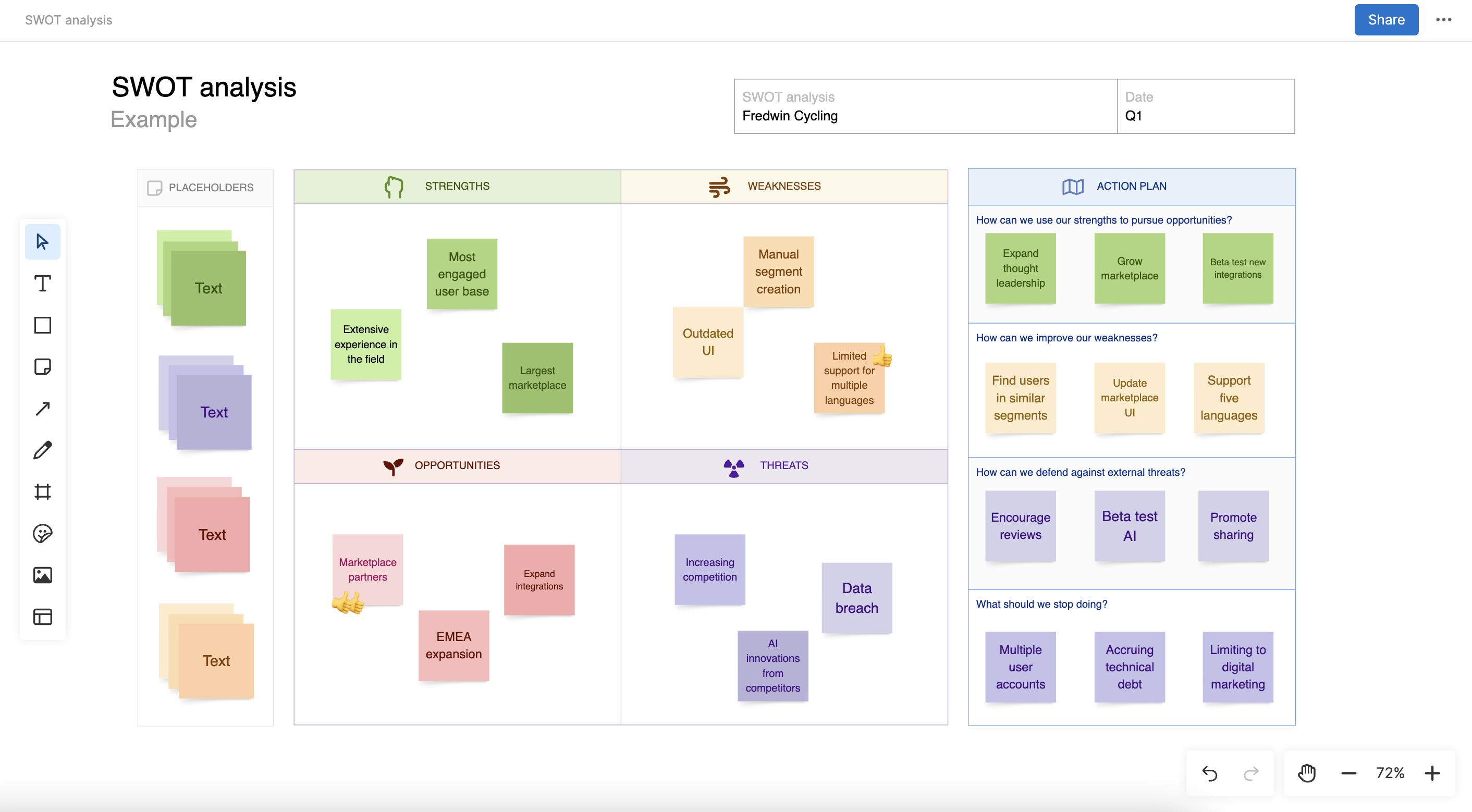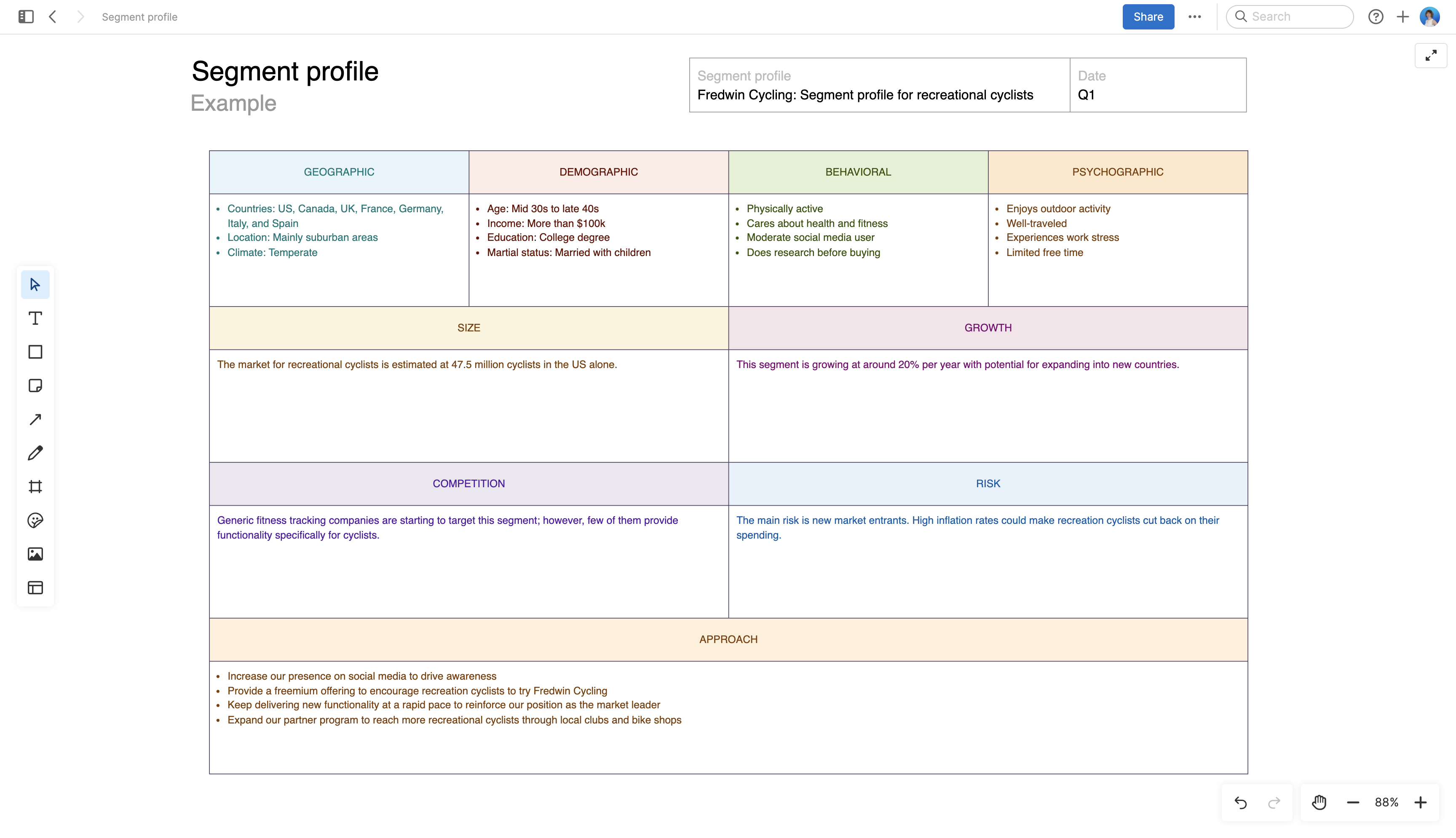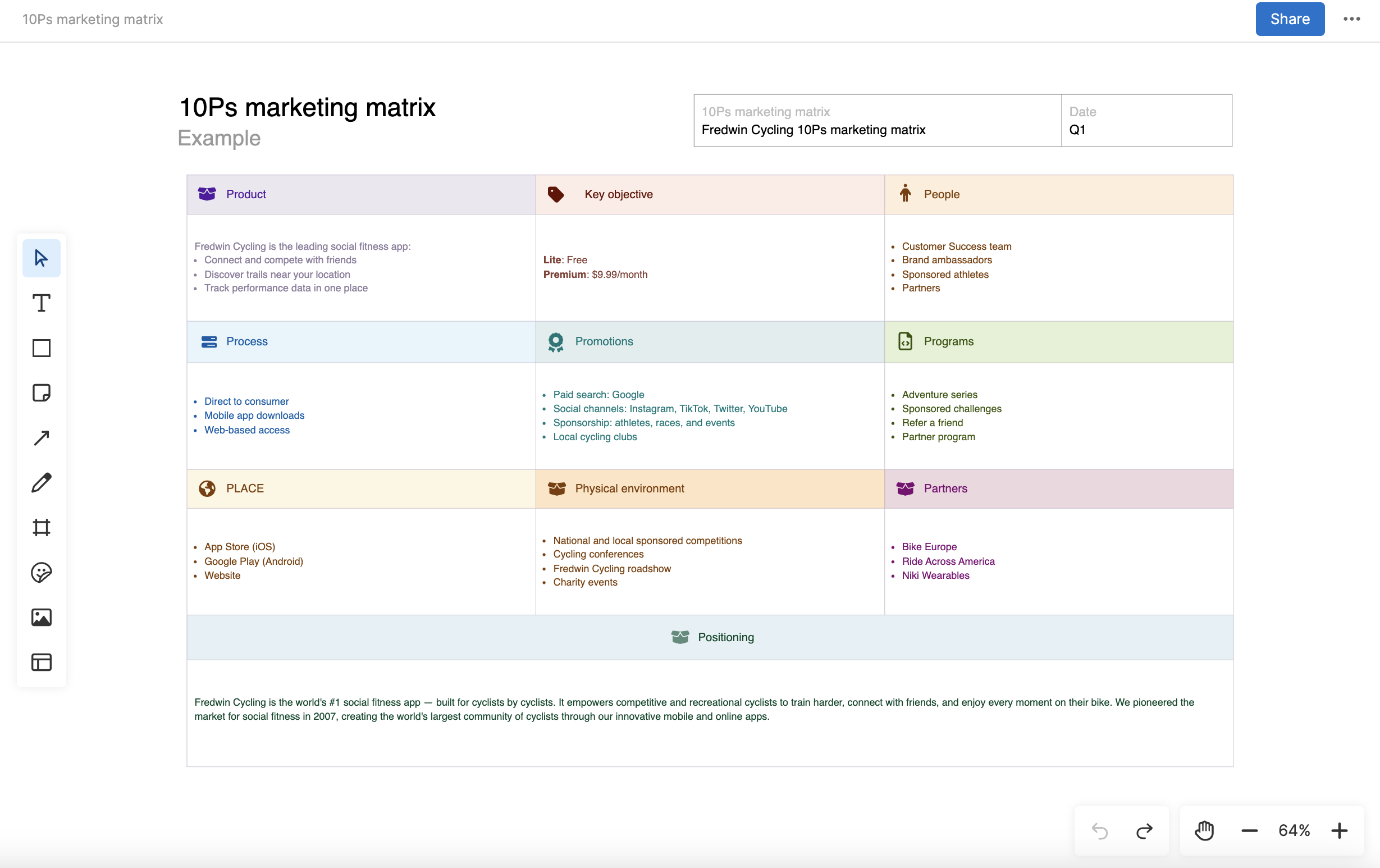6 business model templates for product builders
Last updated: February 2024
A well-defined business model is an important tool. It determines how you will create, deliver, and capture value as a business. When you can articulate this in a structured way, it becomes easier to align on your strategy with the broader team. Your business model can also help guide future product decisions so that they tie back to your overall business goals.
You could build a complex business model from scratch (and some organizations do). But for many product builders, a business model template offers a convenient way to get started — while ensuring you include all of the essential components. Templates such as the business model canvas and lean canvas are some of the most well-known options, but others (such as Porter's 5 forces and segment profiles) can be just as helpful depending on the information you want to capture.
Build out your business model — try Aha! software.
This guide will help you learn more about and access the different business model templates. Use the following links to jump ahead to a specific section:
What is a business model?
A business model answers foundational questions about how your business operates — outlining the problem you are going to solve, the market you will serve, the level of investment required, what products you will offer, and how you will generate revenue. Whether you are part of a startup or an enterprise team, business models are helpful tools for clarifying what you want to achieve (and how).
